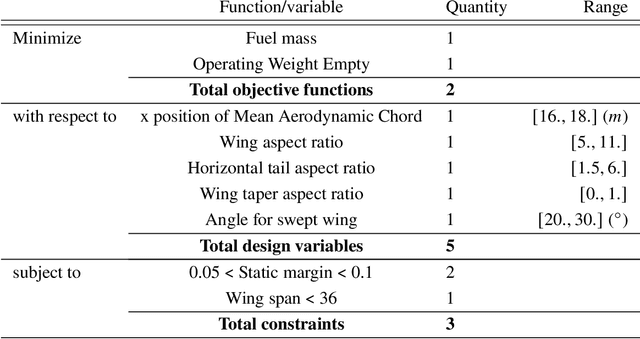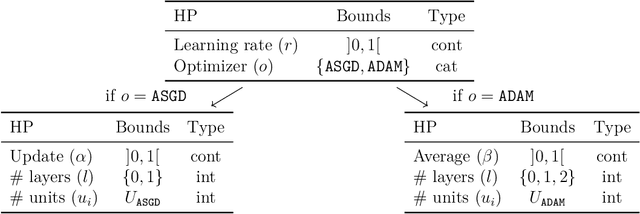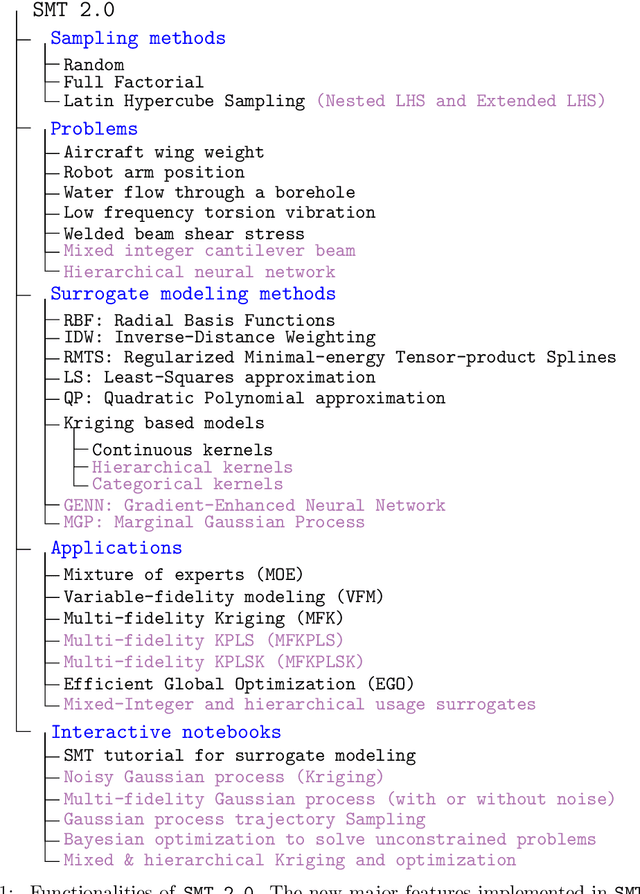Paul Saves
Modèles de Substitution pour les Modèles à base d'Agents : Enjeux, Méthodes et Applications
May 17, 2025Abstract:Multi-agent simulations enables the modeling and analyses of the dynamic behaviors and interactions of autonomous entities evolving in complex environments. Agent-based models (ABM) are widely used to study emergent phenomena arising from local interactions. However, their high computational cost poses a significant challenge, particularly for large-scale simulations requiring extensive parameter exploration, optimization, or uncertainty quantification. The increasing complexity of ABM limits their feasibility for real-time decision-making and large-scale scenario analysis. To address these limitations, surrogate models offer an efficient alternative by learning approximations from sparse simulation data. These models provide cheap-to-evaluate predictions, significantly reducing computational costs while maintaining accuracy. Various machine learning techniques, including regression models, neural networks, random forests and Gaussian processes, have been applied to construct robust surrogates. Moreover, uncertainty quantification and sensitivity analysis play a crucial role in enhancing model reliability and interpretability. This article explores the motivations, methods, and applications of surrogate modeling for ABM, emphasizing the trade-offs between accuracy, computational efficiency, and interpretability. Through a case study on a segregation model, we highlight the challenges associated with building and validating surrogate models, comparing different approaches and evaluating their performance. Finally, we discuss future perspectives on integrating surrogate models within ABM to improve scalability, explainability, and real-time decision support across various fields such as ecology, urban planning and economics.
Surrogate-based optimization of system architectures subject to hidden constraints
Apr 11, 2025Abstract:The exploration of novel architectures requires physics-based simulation due to a lack of prior experience to start from, which introduces two specific challenges for optimization algorithms: evaluations become more expensive (in time) and evaluations might fail. The former challenge is addressed by Surrogate-Based Optimization (SBO) algorithms, in particular Bayesian Optimization (BO) using Gaussian Process (GP) models. An overview is provided of how BO can deal with challenges specific to architecture optimization, such as design variable hierarchy and multiple objectives: specific measures include ensemble infills and a hierarchical sampling algorithm. Evaluations might fail due to non-convergence of underlying solvers or infeasible geometry in certain areas of the design space. Such failed evaluations, also known as hidden constraints, pose a particular challenge to SBO/BO, as the surrogate model cannot be trained on empty results. This work investigates various strategies for satisfying hidden constraints in BO algorithms. Three high-level strategies are identified: rejection of failed points from the training set, replacing failed points based on viable (non-failed) points, and predicting the failure region. Through investigations on a set of test problems including a jet engine architecture optimization problem, it is shown that best performance is achieved with a mixed-discrete GP to predict the Probability of Viability (PoV), and by ensuring selected infill points satisfy some minimum PoV threshold. This strategy is demonstrated by solving a jet engine architecture problem that features at 50% failure rate and could not previously be solved by a BO algorithm. The developed BO algorithm and used test problems are available in the open-source Python library SBArchOpt.
Bayesian optimization for mixed variables using an adaptive dimension reduction process: applications to aircraft design
Apr 11, 2025Abstract:Multidisciplinary design optimization methods aim at adapting numerical optimization techniques to the design of engineering systems involving multiple disciplines. In this context, a large number of mixed continuous, integer and categorical variables might arise during the optimization process and practical applications involve a large number of design variables. Recently, there has been a growing interest in mixed variables constrained Bayesian optimization but most existing approaches severely increase the number of the hyperparameters related to the surrogate model. In this paper, we address this issue by constructing surrogate models using less hyperparameters. The reduction process is based on the partial least squares method. An adaptive procedure for choosing the number of hyperparameters is proposed. The performance of the proposed approach is confirmed on analytical tests as well as two real applications related to aircraft design. A significant improvement is obtained compared to genetic algorithms.
Regularized infill criteria for multi-objective Bayesian optimization with application to aircraft design
Apr 11, 2025



Abstract:Bayesian optimization is an advanced tool to perform ecient global optimization It consists on enriching iteratively surrogate Kriging models of the objective and the constraints both supposed to be computationally expensive of the targeted optimization problem Nowadays efficient extensions of Bayesian optimization to solve expensive multiobjective problems are of high interest The proposed method in this paper extends the super efficient global optimization with mixture of experts SEGOMOE to solve constrained multiobjective problems To cope with the illposedness of the multiobjective inll criteria different enrichment procedures using regularization techniques are proposed The merit of the proposed approaches are shown on known multiobjective benchmark problems with and without constraints The proposed methods are then used to solve a biobjective application related to conceptual aircraft design with ve unknown design variables and three nonlinear inequality constraints The preliminary results show a reduction of the total cost in terms of function evaluations by a factor of 20 compared to the evolutionary algorithm NSGA-II.
SMT-EX: An Explainable Surrogate Modeling Toolbox for Mixed-Variables Design Exploration
Mar 25, 2025Abstract:Surrogate models are of high interest for many engineering applications, serving as cheap-to-evaluate time-efficient approximations of black-box functions to help engineers and practitioners make decisions and understand complex systems. As such, the need for explainability methods is rising and many studies have been performed to facilitate knowledge discovery from surrogate models. To respond to these enquiries, this paper introduces SMT-EX, an enhancement of the open-source Python Surrogate Modeling Toolbox (SMT) that integrates explainability techniques into a state-of-the-art surrogate modelling framework. More precisely, SMT-EX includes three key explainability methods: Shapley Additive Explanations, Partial Dependence Plot, and Individual Conditional Expectations. A peculiar explainability dependency of SMT has been developed for such purpose that can be easily activated once the surrogate model is built, offering a user-friendly and efficient tool for swift insight extraction. The effectiveness of SMT-EX is showcased through two test cases. The first case is a 10-variable wing weight problem with purely continuous variables and the second one is a 3-variable mixed-categorical cantilever beam bending problem. Relying on SMT-EX analyses for these problems, we demonstrate its versatility in addressing a diverse range of problem characteristics. SMT-Explainability is freely available on Github: https://github.com/SMTorg/smt-explainability .
Bayesian Optimization of a Lightweight and Accurate Neural Network for Aerodynamic Performance Prediction
Mar 25, 2025Abstract:Ensuring high accuracy and efficiency of predictive models is paramount in the aerospace industry, particularly in the context of multidisciplinary design and optimization processes. These processes often require numerous evaluations of complex objective functions, which can be computationally expensive and time-consuming. To build efficient and accurate predictive models, we propose a new approach that leverages Bayesian Optimization (BO) to optimize the hyper-parameters of a lightweight and accurate Neural Network (NN) for aerodynamic performance prediction. To clearly describe the interplay between design variables, hierarchical and categorical kernels are used in the BO formulation. We demonstrate the efficiency of our approach through two comprehensive case studies, where the optimized NN significantly outperforms baseline models and other publicly available NNs in terms of accuracy and parameter efficiency. For the drag coefficient prediction task, the Mean Absolute Percentage Error (MAPE) of our optimized model drops from 0.1433\% to 0.0163\%, which is nearly an order of magnitude improvement over the baseline model. Additionally, our model achieves a MAPE of 0.82\% on a benchmark aircraft self-noise prediction problem, significantly outperforming existing models (where their MAPE values are around 2 to 3\%) while requiring less computational resources. The results highlight the potential of our framework to enhance the scalability and performance of NNs in large-scale MDO problems, offering a promising solution for the aerospace industry.
A graph-structured distance for heterogeneous datasets with meta variables
May 20, 2024



Abstract:Heterogeneous datasets emerge in various machine learning or optimization applications that feature different data sources, various data types and complex relationships between variables. In practice, heterogeneous datasets are often partitioned into smaller well-behaved ones that are easier to process. However, some applications involve expensive-to-generate or limited size datasets, which motivates methods based on the whole dataset. The first main contribution of this work is a modeling graph-structured framework that generalizes state-of-the-art hierarchical, tree-structured, or variable-size frameworks. This framework models domains that involve heterogeneous datasets in which variables may be continuous, integer, or categorical, with some identified as meta if their values determine the inclusion/exclusion or affect the bounds of other so-called decreed variables. Excluded variables are introduced to manage variables that are either included or excluded depending on the given points. The second main contribution is the graph-structured distance that compares extended points with any combination of included and excluded variables: any pair of points can be compared, allowing to work directly in heterogeneous datasets with meta variables. The contributions are illustrated with some regression experiments, in which the performance of a multilayer perceptron with respect to its hyperparameters is modeled with inverse distance weighting and $K$-nearest neighbors models.
High-dimensional mixed-categorical Gaussian processes with application to multidisciplinary design optimization for a green aircraft
Nov 10, 2023Abstract:Multidisciplinary design optimization (MDO) methods aim at adapting numerical optimization techniques to the design of engineering systems involving multiple disciplines. In this context, a large number of mixed continuous, integer, and categorical variables might arise during the optimization process, and practical applications involve a significant number of design variables. Recently, there has been a growing interest in mixed-categorical metamodels based on Gaussian Process (GP) for Bayesian optimization. In particular, to handle mixed-categorical variables, several existing approaches employ different strategies to build the GP. These strategies either use continuous kernels, such as the continuous relaxation or the Gower distance-based kernels, or direct estimation of the correlation matrix, such as the exponential homoscedastic hypersphere (EHH) or the Homoscedastic Hypersphere (HH) kernel. Although the EHH and HH kernels are shown to be very efficient and lead to accurate GPs, they are based on a large number of hyperparameters. In this paper, we address this issue by constructing mixed-categorical GPs with fewer hyperparameters using Partial Least Squares (PLS) regression. Our goal is to generalize Kriging with PLS, commonly used for continuous inputs, to handle mixed-categorical inputs. The proposed method is implemented in the open-source software SMT and has been efficiently applied to structural and multidisciplinary applications. Our method is used to effectively demonstrate the structural behavior of a cantilever beam and facilitates MDO of a green aircraft, resulting in a 439-kilogram reduction in the amount of fuel consumed during a single aircraft mission.
SMT 2.0: A Surrogate Modeling Toolbox with a focus on Hierarchical and Mixed Variables Gaussian Processes
May 23, 2023



Abstract:The Surrogate Modeling Toolbox (SMT) is an open-source Python package that offers a collection of surrogate modeling methods, sampling techniques, and a set of sample problems. This paper presents SMT 2.0, a major new release of SMT that introduces significant upgrades and new features to the toolbox. This release adds the capability to handle mixed-variable surrogate models and hierarchical variables. These types of variables are becoming increasingly important in several surrogate modeling applications. SMT 2.0 also improves SMT by extending sampling methods, adding new surrogate models, and computing variance and kernel derivatives for Kriging. This release also includes new functions to handle noisy and use multifidelity data. To the best of our knowledge, SMT 2.0 is the first open-source surrogate library to propose surrogate models for hierarchical and mixed inputs. This open-source software is distributed under the New BSD license.
 Add to Chrome
Add to Chrome Add to Firefox
Add to Firefox Add to Edge
Add to Edge